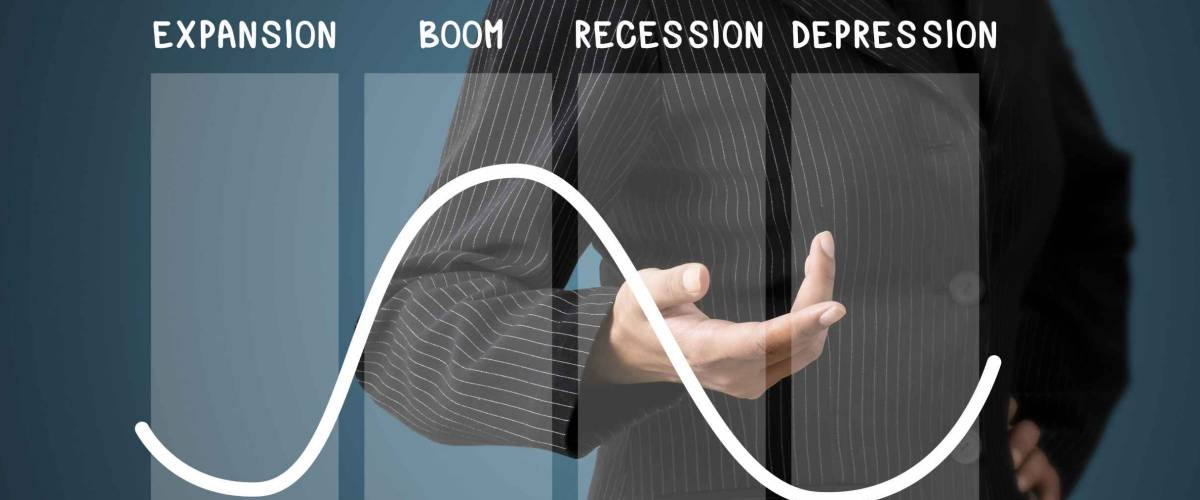Structural unemployment

Structural unemployment happens when a particular skill or trade is no longer in demand.
This can be seasonal; farms need fewer laborers outside the planting and harvesting months. But often this happens when technological advancement, most notably automation, replaces the work done by people.
While new tech can make things more efficient or convenient — Can you imagine still having to buy ice from a door-to-door iceman? — it comes at a cost. You may not think about the cashiers being replaced when you use the self-checkout lanes at the grocery stores.
Employees now deemed obsolete may need to go back to school to learn new skills or ask their employer for training for a new position. This prospect might be devastating if you’ve been on the same path for years or decades and have to make a late career switch.
Kiss your credit card debt goodbye
Millions of Americans are struggling to crawl out of debt in the face of record-high interest rates. A personal loan offers lower interest rates and fixed payments, making it a smart choice to consolidate high-interest credit card debt. It helps save money, simplifies payments, and accelerates debt payoff. Credible is a free online service that shows you the best lending options to pay off your credit card debt fast — and save a ton in interest.
Explore better ratesHow to adapt
1. Do your research
Take a peek at data from the Bureau of Labor Statistics to see which industries are expected to hire the most people over the coming decade. You don’t want to switch to another job that might fall out of demand.
You won’t have to start over at square one. Chances are high that many of the skills you possess can be translated into a new career path.
For example, if you’ve got skills in hospitality and working with the public, you could be a great fit for home health care work — an industry expected to grow 36% between 2018 and 2028.
Depending on the job you want, you may already have what you need to get hired and trained. You just have to make a convincing case.
2. Get matched with an eager employer
When it comes time to apply for a new job, make sure you go about it in a sensible way. Filling out an application a hundred times on a hundred different company websites is just going to eat up valuable time.
If you haven’t needed to look for work in a while, you should know online job boards are getting way more advanced. Job hunting is always scary, but it’s not as onerous as it used to be.
Take ZipRecruiter, for instance. Once you upload your resume, the website scans it for your unique skills, education and experience. Then it tracks down all kinds of jobs that are a good fit for you — even if you didn’t know they existed.
You can even see when employers have looked at your application, so you know whether you’re on the right track.
Cyclical unemployment

Economies go through cycles: rising and falling, boom and bust.
When the demand for goods and services decreases — maybe a market crash has spooked consumers into holding on to their money — fewer workers are needed to supply those goods and services. Companies lay off their excess employees, who no longer have the income to spend, decreasing demand even further.
This downward spiral continues until a new equilibrium is reached, consumers start spending again, and workers get rehired. An upward spiral begins.
It’s a natural process, though that’s not very comforting to the people who get the pink slip.
Kiss your credit card debt goodbye
Millions of Americans are struggling to crawl out of debt in the face of record-high interest rates. A personal loan offers lower interest rates and fixed payments, making it a smart choice to consolidate high-interest credit card debt. It helps save money, simplifies payments, and accelerates debt payoff. Credible is a free online service that shows you the best lending options to pay off your credit card debt fast — and save a ton in interest.
Explore better ratesHow to adapt
1. Create an emergency fund
If you’re still employed, it’s time to take a hard look at your rainy day fund. Experts recommend having enough money on hand for three to six months of expenses, but the Federal Reserve says more than half of Americans are just $400 away from financial ruin.
Squirrel away whatever you can until you hit a safe threshold. A great place to stash your emergency money is a high-yield savings account, because you’ll actually earn decent interest while your cash is sitting around unused.
If you’re already out of a job, you’ll have to look at ways to cut your expenses. Thankfully, companies and governments are giving people a break on certain bills during the pandemic, so you have more support than usual.
2. Apply for government benefits
Unemployment insurance (UI) helps replace a portion of your wages in the event of a layoff, but some states don’t offer nearly as much as others.
Thankfully, UI has been expanded in the wake of coronavirus to help people weather this difficult time.
In addition to the federal government’s $1,200 stimulus payments, folks who’ve been laid off are eligible for an extra $600 a week in unemployment until the end of July 2020.
If you’re in a serious jam, you can also tap into your retirement funds.
Those dealing with financial hardship caused by the coronavirus can take up to $100,000 from a 401(k) or traditional IRA without having to pay the usual 10% penalty. You’ll have to pay it back within three years to avoid taxes, so it’s a good thing cyclical unemployment is, for the most part, temporary.
Frictional unemployment

Sometimes called transitional unemployment, frictional unemployment is caused by quitting your job, getting fired or being forced out by illness or injury.
Maybe you were a victim of some harsh budget cuts. Maybe you had a baby and decided to leave the workforce for a couple years. Or you got sick and needed to focus on your health.
Once you start looking for work again, you join the ranks of the frictionally unemployed.
Where does the name come from? The economy doesn’t smoothly match employees with employers — everyone knows how onerous the process can be — so there will always be some amount of “friction” as people find their way to their next job.
How to adapt
1. Cover your bases
Most people work hard day in and day out to keep their jobs and protect their income. Too few do anything to protect their income against illness or injury.
You don’t need to work on a construction site or intensive-care unit to invest in disability insurance. Anyone can slip and fall, and the coronavirus pandemic has shown once again that very healthy people can get very sick. Have you ever asked yourself how you would stay afloat if you couldn’t work for months at a time?
While you may have access to group benefits that pay out a portion of your income while you’re incapacitated, it may not be enough to sustain your home, lifestyle or family. And those benefits disappear if you quit your job or your employer finds a reason to let you go.
For as little as $9 a month, you can get a robust insurance plan that will see you through the worst kind of unemployment there is.
2. Pick up gigs where you can
No one wants to have gaps on their resume. Considering the current economic climate, your next killer career opportunity could be a long ways away.
Don’t lie stagnant. It’s time to get creative, flex a little entrepreneurial muscle and find small jobs where you can.
Online marketplaces make the search pretty painless, if you have skills that can be transferred over the internet. Maybe you’re a writer, graphic designer, tutor or even a voice actor. Once you sign up, you’ll find plenty of people looking for talent like yours.
Side gigs are no replacement for a full-time job — well, unless you want them to be — but they’ll help you stay active and solvent while you wait for your phone to ring.
This 2 minute move could knock $500/year off your car insurance in 2024
OfficialCarInsurance.com lets you compare quotes from trusted brands, such as Progressive, Allstate and GEICO to make sure you're getting the best deal.
You can switch to a more affordable auto insurance option in 2 minutes by providing some information about yourself and your vehicle and choosing from their tailor-made results. Find offers as low as $29 a month.








